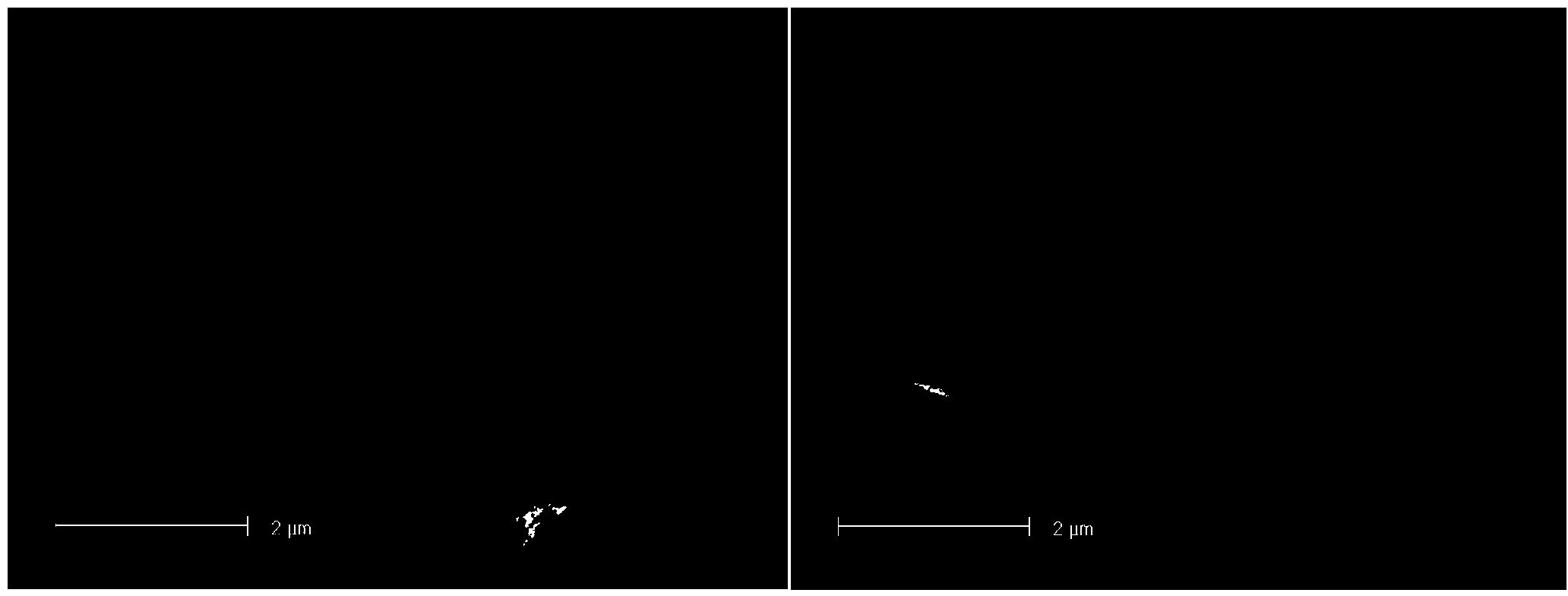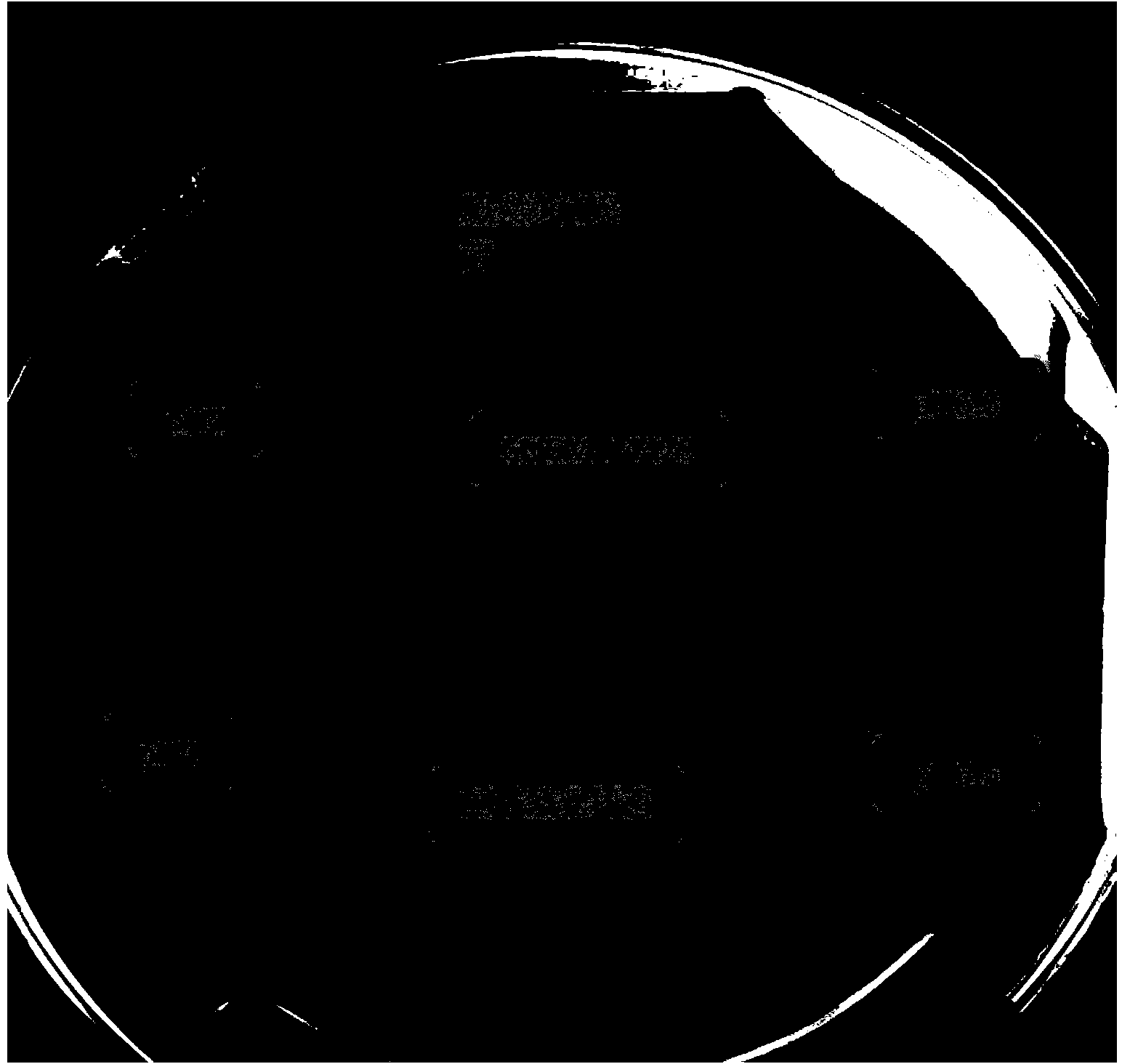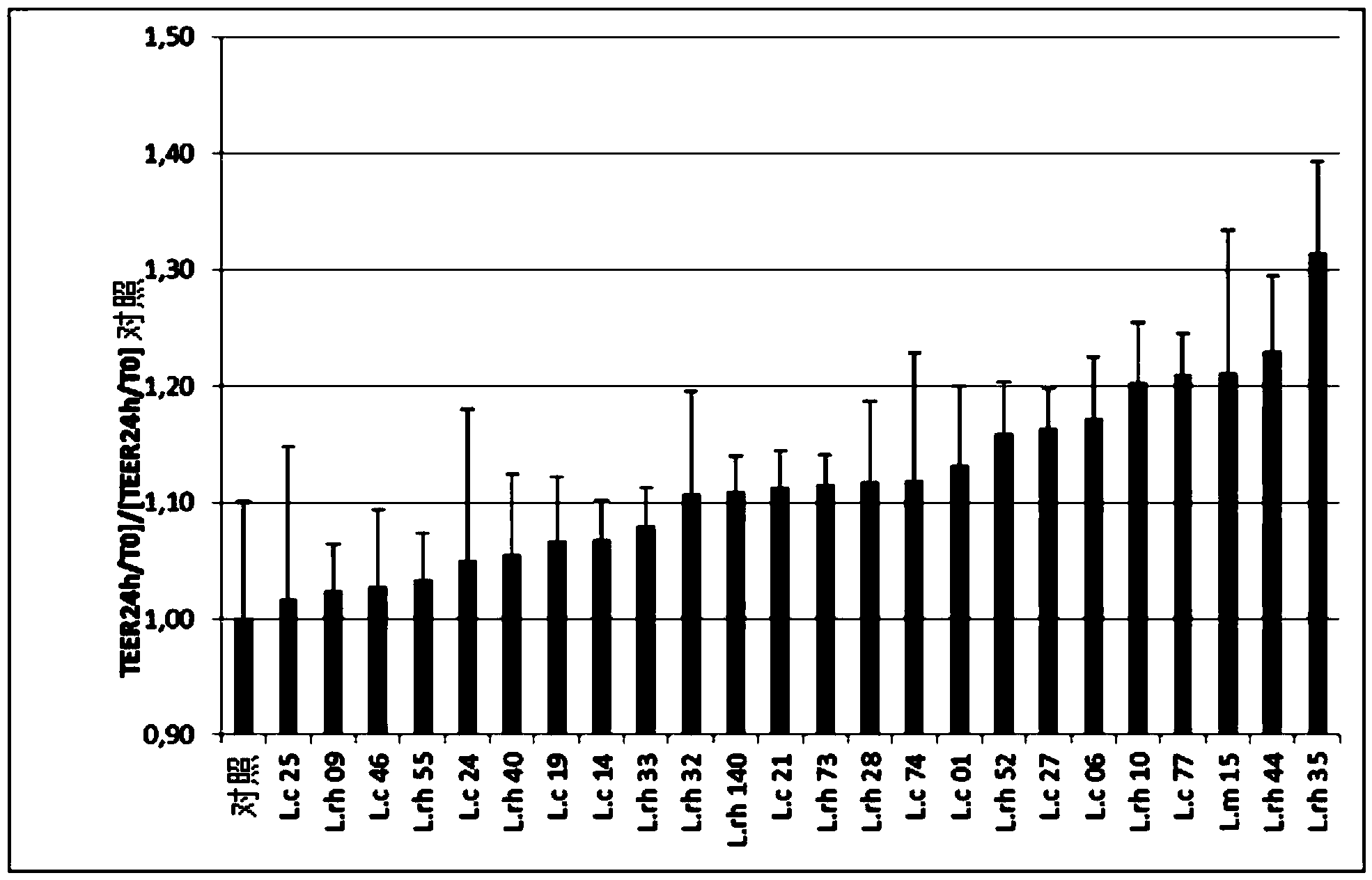Novel strain of lactobacillus mucosae
A technology of Lactobacillus mucosae, strains, applied in the direction of bacteria, microorganism-based methods, resistance to vector-borne diseases, etc., can solve problems such as the impact of intestinal barrier function
- Summary
- Abstract
- Description
- Claims
- Application Information
AI Technical Summary
Problems solved by technology
Method used
Image
Examples
Embodiment 1
[0027]Example 1 - Morphology and fermentation properties of Lactobacillus mucosal strain CNCM I-4429
[0028] form
[0029] Electron microscope images of strain CNCM I-4429 are shown in figure 1 . Strain CNCM 1-4429 exhibited a distorted shape; it is a distorted rod-shaped bacterium.
[0030] Analysis of carbohydrate metabolism:
[0031] Sugar fermentation assays were performed on a Bioscreen instrument (Oy Growth Curves Ab Ltd). Twenty-one sugars were selected for analysis. List them in Table I.
[0032] The analysis with the Bioscreen lasted 24 hours, with measurements taken every 20 minutes after 10 seconds of shaking. Two analyzes were performed in triplicate each. To avoid the inhibitory effect of glucose by catabolites, a medium with galactose was used for the preculture.
[0033] - pre-medium MRS-galactose;
[0034] - Medium, MRS containing 1% sugar to be tested
[0035] - In each well; 300 μL of culture medium and 1% pre-medium
[0036] -During the 24h perio...
Embodiment 2
[0044] Example 2 - Mucus-binding properties of Lactobacillus mucosal strain CNCM 1-4429
[0045] Adhesion to mucin:
[0046] The analysis of adhesion to mucin (Sigma Aldrich) from porosin gastrotype II was performed by 2 protocols "static" and "dynamic" to study biofilm formation.
[0047] The first and last steps of the preparation are the same for both protocols. Mucin was dissolved in PBS pH 7 at a concentration of 20 mg / ml, and then heat-sterilized glass spheres (6 mm in diameter) were submerged in the mucin solution, incubated at 37°C for 1 hour, and then placed at 4°C overnight. The next day the spheroids were washed twice in pH 7 PBS.
[0048] For the "static" protocol, spheroids were submerged in 1 ml of an overnight culture of mucosal Lactobacillus grown in MRS+glucose / MRS+ribose and incubated at 37°C for 4 h, while in the dynamic model, each strain was inoculated before starting Incubate with glass balls at 37°C for 1h.
[0049] The dynamic model used to study bi...
Embodiment 3
[0066] Example 3 - Antimicrobial activity of Lactobacillus mucosal strain CNCM 1-4429
[0067] The "overlay" method described in literature (CHARTERIS et al., J Food Prot, 61, 1636-43, 1998; TOMINAGA & HATAKEYAMA, Appl Environ Microbiol, 72, 1141-7, 2006) was used for testing.
[0068] Cultures of Lactobacillus mucosal CNCMI-4429 cultured for 11 h, 18 h and 48 h in glucose-containing medium were centrifuged and the acidic pH (~pH4) of the supernatant was adjusted to pH 6.5 with 2M NaOH. In this way the lactic acid is neutralized and dissociated to remove its toxicity. "Coverage" tests were performed on plates. The medium used was Soft Brain Heart Infusion-BHI (Difco) (0.7% agar), inoculated with an overnight culture of Salmonella. When the surface of the inoculated medium was dry, four holes with a diameter of 5 mm were punched in each plate. Then, 80 μl of cell-free supernatants of Lactobacillus mucosae (pH-adjusted and pH-unadjusted for control) were placed in each well. ...
PUM
 Login to View More
Login to View More Abstract
Description
Claims
Application Information
 Login to View More
Login to View More - R&D
- Intellectual Property
- Life Sciences
- Materials
- Tech Scout
- Unparalleled Data Quality
- Higher Quality Content
- 60% Fewer Hallucinations
Browse by: Latest US Patents, China's latest patents, Technical Efficacy Thesaurus, Application Domain, Technology Topic, Popular Technical Reports.
© 2025 PatSnap. All rights reserved.Legal|Privacy policy|Modern Slavery Act Transparency Statement|Sitemap|About US| Contact US: help@patsnap.com



